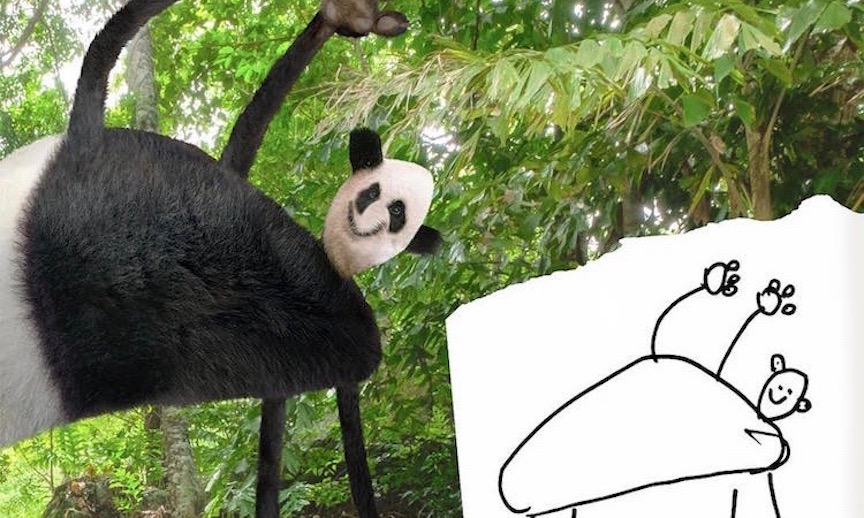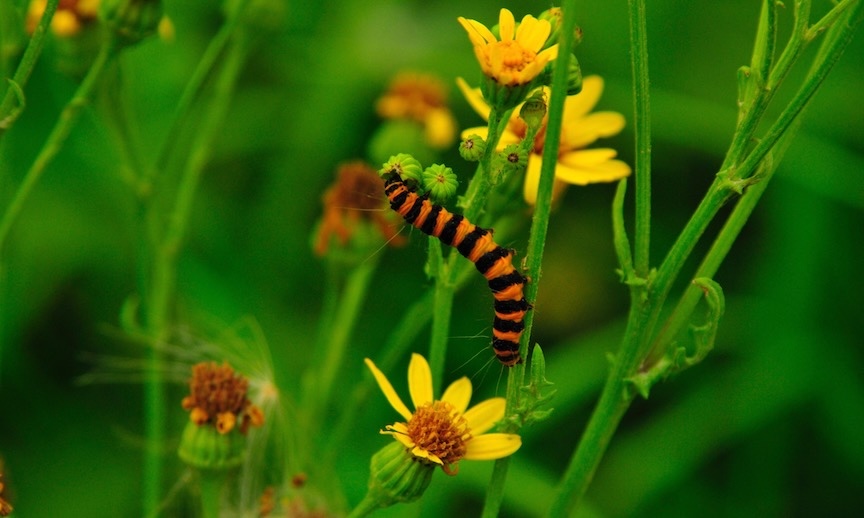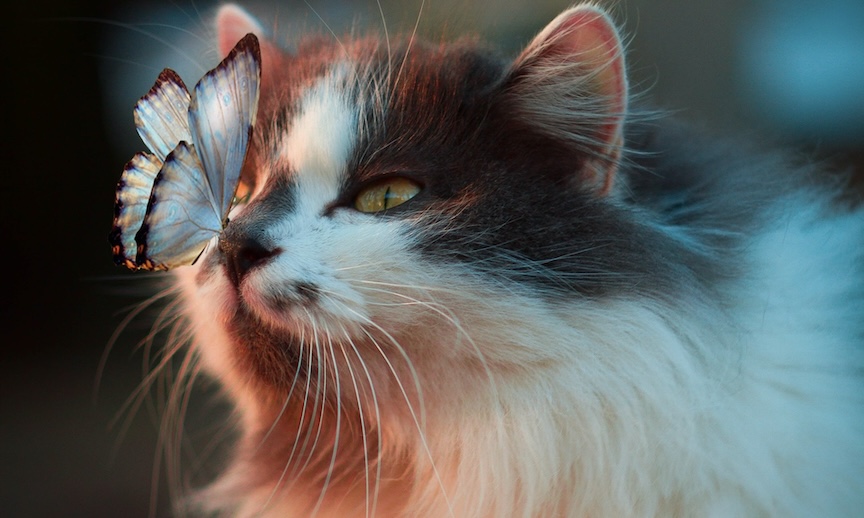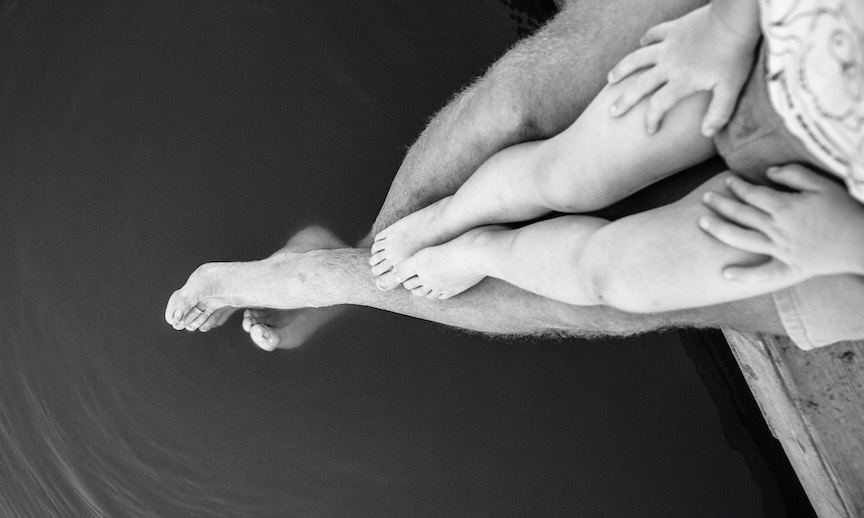THIS BETTER BE GOOD
You may have seen some of the artistic collaborations of artist Tom Curtis and his young sons, Dom and Al. Maybe you don’t know their names, but their stuff is all over social media; they’ve got an Instagram account (@thingsihavedrawn); the piece above is theirs.
How they work is — the kids (who are about 6 or 7 years old) draw animals and things and people, mostly animals. Then their dad takes the kids’ drawings and creates photoshopped “real” renditions. The results, as you can see, are weird and quite delightful. Here’s another one:

The process started when Tom, the dad, considered the strange proportions and physiological anomalies that tend to show up in his kids’ (like all kids’) artwork — features such as extra-long skinny legs, or a face that’s placed all on one side of a head. He wondered if this was because most kids have not yet developed the motor skills to finesse a true likeness, or if it was because they actually saw the world differently. It’s a really interesting question.
Tom says that at first, when he began to actualize his sons’ creatures with photoshopped fur and skin, he expected the results to be totally terrifying. But he was pleased to discover that the animals, though freakish, all looked pretty happy. The animal kingdom of his boys’ imagination seems like a friendly place. Who cares if that elephant’s smile is bizarrely placed above his trunk?
I was thinking about children’s creativity and the special freedom of it. Kids tend to be a lot less concerned with whether or not they’ve got it “right.” They just put it out there. Yup, that’s my panda, you got a problem with it? Here’s my opera, my novel, my spaceship design… It’s enviable, this kind of confidence, the chutzpah of it.
I almost can’t imagine such liberty around creativity. Even when I’m trying to be loose and improvisational, or I’m deliberately letting myself flow in a stream of consciousness when I’m writing or whatever, it’s really hard to not get up in my head about it. Usually, my concern becomes about whether or not it’s “good.” Which is the most surefire way to take things out of the loose and improvisational and make them stilted and self-conscious. Ugh.
“Good” is a pretty arbitrary concept in many subjective instances, especially in the realm of creative self-expression. It’s super judge-y in any realm.
I don’t like to think of myself as judgmental. But definitely with myself at least, when I pay attention, I notice that I’m in a fairly constant state of self-assessment, self-evaluation, self-judgment. Heck, I’m a cop, prosecutor, judge, jury, and executioner most of the time regarding my own worthiness to be on the planet doing whatever I’m doing.
With other people I’m less likely to be overtly critical. I don’t usually go around inspecting and evaluating others’ creative output as “good” and “bad.” But you know what? A fair amount of my mental chatter is about with whether or not I agree with something, whether or not I like this or that. This person, that situation, this virus, that economy. Which often gets pretty close to the same good/bad dichotomy.
I either agree or disagree with almost everyone and everything. I either like or dislike almost everyone and everything. Actually, I’m really opinionated now that you mention it. And I’m trying to remember how this is different from being “judgmental.”
Of course, we do need to be able to DISCERN. It’s easy to say stuff like “It’s all Good,” and think we’re standing in some blissful state of non-judgment. But it’s not really all that groovy if it means forfeiting our ability to tell right from wrong, fact from fiction, workable from ridiculous. These are very useful distinctions, and we are hobbled in our functionality when we can’t tell the difference. Also, there’s really nothing wrong with having clear preferences, strong opinions, and well-defined values…
What I’m wondering about, though, is how all my opinions-assements-agreements-judgments (whatever you want to call them) maybe do sometimes get in the way of my experience of the ultimate, essential goodness of things.
The problem is: if my approach to the world, my first response, is always a matter of agreement or disagreement, like or dislike, approval or disapproval — well, then, I’m probably never even going to get to the inherent goodness of anything. It doesn’t much matter if it’s all ultimately good because I’ve already pre-determined whether or not I’m ever going to be willing to appreciate it as such. I’ve placed myself in an oppositional relationship with it, where the best it can do is please me, maybe win me over. Gross.
So while “It’s all Good” is certainly not be the final word on any subject, I do think it’s a terrific place to start. For sure, the glibness of “It’s all Good” sometimes makes me cringe — it can sound dismissive and even cruel when it’s applied as a blanket statement to situations or conditions that are obviously not workable, kind, just, inclusive, or fair. But I really dig it not as a conclusion, but rather as the principle of wholeness and inclusivity with which we commence…
It’s Good — this, that, and everything. What if I started with that?
This thing I’m working on — it’s good. These situations in the world — they’re good. That person I don’t like at all — she’s good. Me — I’m good.
If I can practice starting with Good, then I think then that the subsequent contribution of my preferences, opinions, ideas, agreement (or not), and collaboration might be much more fruitful and inventive. “It’s good” lets us work together. The general presumption of Good invites more participation. The presumption of each other’s Good lifts us out of the need to see things the same way, to like each other or agree with each other before we can move forward. The presumption of our own Good liberates us from having to have everything all figured out or perfected before we can share ourselves with the world.
Maybe it can all be sort of like Tom Curtis when he looked at his kids’ artwork and said, “Wow, what a wonderfully imaginative way of seeing the world! I’ve never looked at it that way before. Maybe I can add something to that vision and we can create something even more fantastic together.”
Join us this week for my talk, special music by Janna Nelson and Scott Hooker, and a singalong with me and Patty. We’re going to start avoiding the Sunday morning bandwith overload by having everything up online by Saturday night at 6:00pm. So you can join us for Saturday night service, or stick with Sunday morning if you prefer (it’ll still be there), or check it all out any time thereafter at your convenience — at BOSQUECSL.ORG, VIMEO.COM/BOSQUECSL, and on FACEBOOK.
Be good to each other, friends. XO, Drew
©2020 Drew Groves
